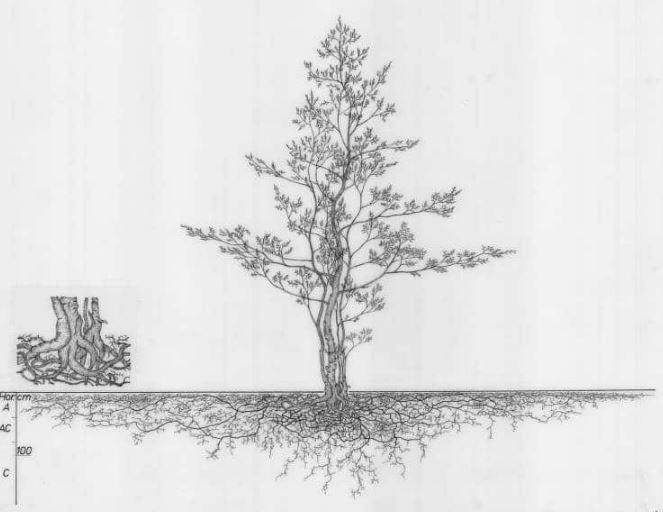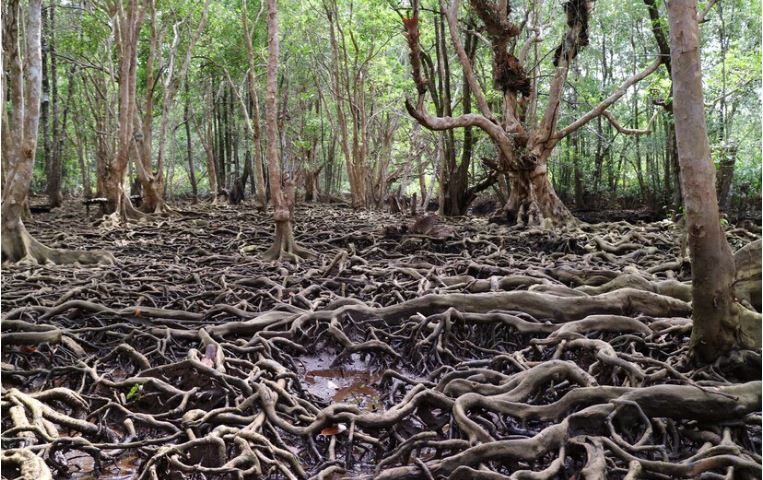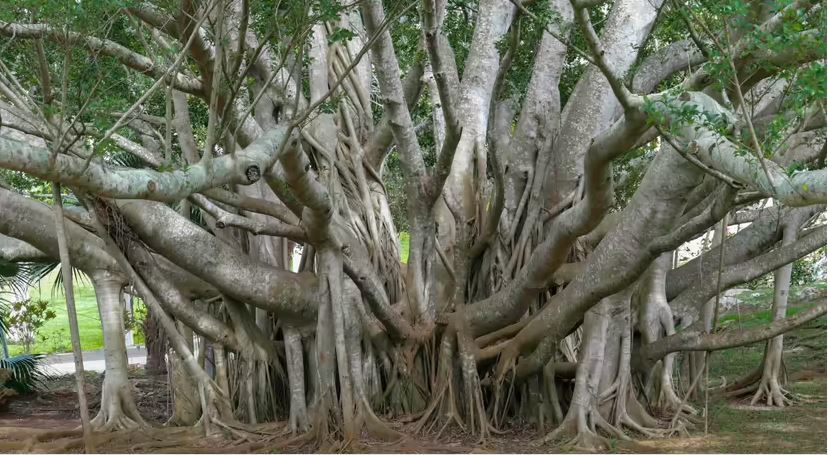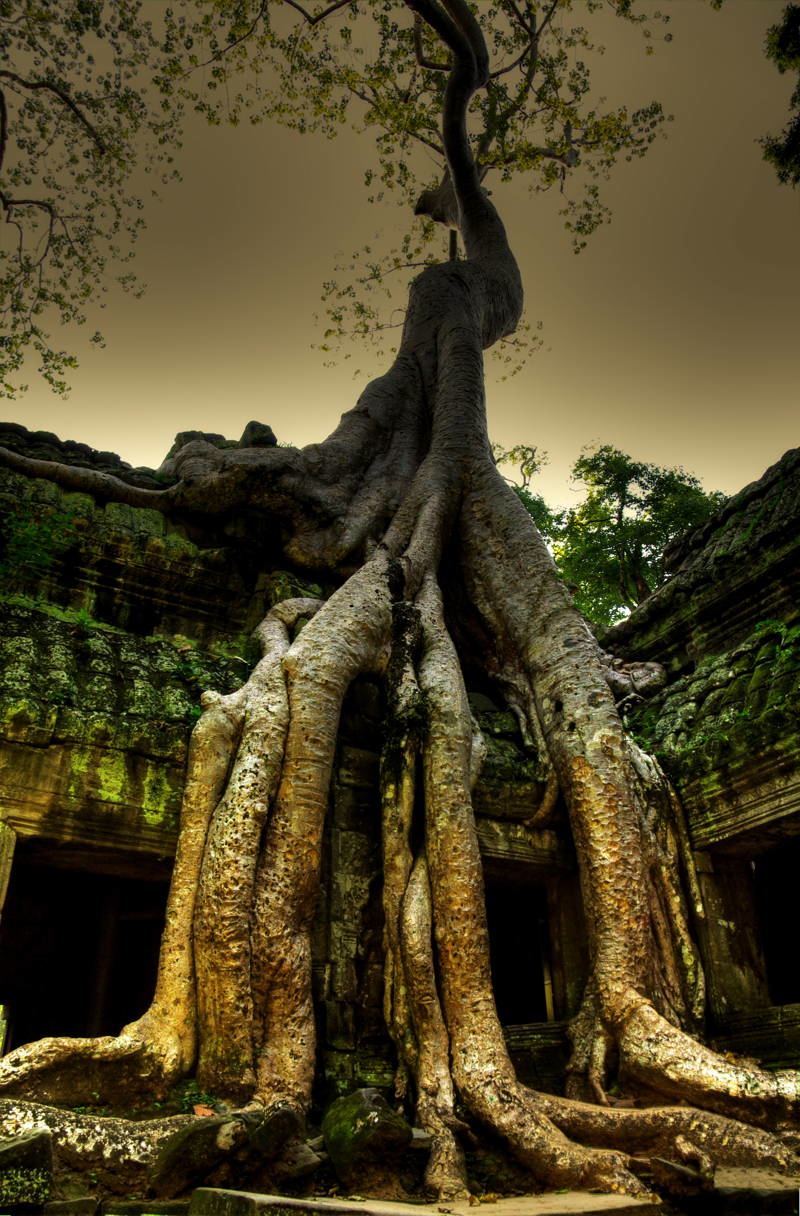WMT #15: Amazing Arboreal Anchors

The 15th and last cache of the series, a camo-taped preform tube, is hidden high up in the extraordinary exposed roots of a huge sycamore besides the trail (Bury Lane bridleway) as it approaches its end/start point.
Most tree roots are located in the top 15-60cm of soil and occupy an area 2-4 x the diameter of the tree crown/dripline. They obtain water, oxygen and minerals from soil and do not grow toward anything or in any particular direction.

The root system of a tree performs many vital functions. In winter, it is a store-house for essential food reserves needed by the tree to produce spring foliage. Roots absorb and transport water and minerals from the soil to the rest of the tree. Roots also anchor the portion of the tree above ground
Tree root systems consist of large perennial roots and smaller, short-lived feeder roots. The large, woody tree roots and their primary branches increase in size and grow horizontally. In contrast, feeder roots, although averaging only 1/16" diameter, constitute the major portion of the root system’s surface area. These smaller roots grow outward and predominantly upward from the large roots near the soil surface, where minerals, water and oxygen are relatively abundant. The major function of feeder roots is the absorption of water and minerals. Under normal conditions, feeder roots die and are replaced on a regular basis.

Roots grow where water, minerals and oxygen are found in the soil supporting growth. They water and oxygen but if soils are saturated with water, most roots will die. Because oxygen is usually located in the upper surface layer of soil, the largest concentration of feeder roots exists in this zone.
Other factors determining root growth include soil compaction (reduction in air pockets resulting from soil particles being packed together) and soil temperature. In general, as the depth increases, soil compaction increases, while the availability of minerals, oxygen and soil temperature all decrease. In some instances, hard, compacted soil (hardpans) can occur near the surface, which restricts root growth.

One of the biggest killers of urban trees is use of heavy clay subsoils instead of topsoil and soil compaction. Heavy clays and soil compaction restricts water and oxygen uptake by roots, and is associated with use of deep sub soils as fill for landscaping and compaction from construction of roads, parking lots, and from many other factors including foot traffic, construction machinery, livestock, and poor soil preparation.
Changes in soil depth around trees can also cause injury to root systems. The addition of only 4-6 inches of soil over an existing root system drastically reduces the amount of oxygen and water available to the roots. The opposite issue of removal of soil around an existing tree can expose and injure roots, change the soil conditions where roots grow, and reduce water availability.

If the root system is severely damaged, tree removal is usually necessary as a tree with a structurally weakened root system can fall over during wind storms.

Recently it has been found that trees communicate with each other through the Wood Wide Web - a mycorrhizal network - fungi living in and around tree roots - which connects all trees in a given area together as a kind of superorganism. See here for an excellent short BBC video which explains how it works and here for a longer TED Talk presentation on the same topic.
